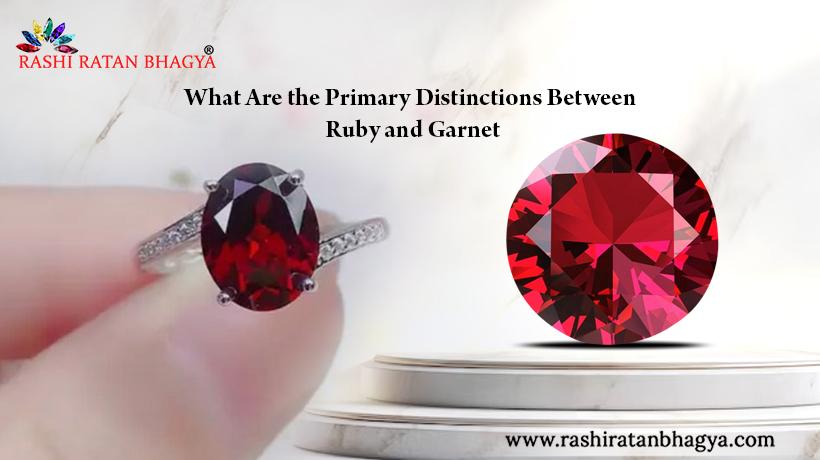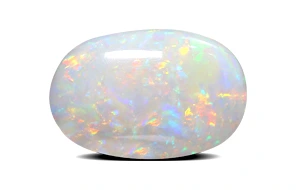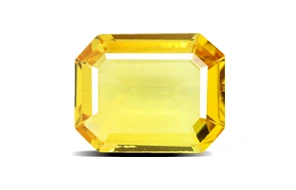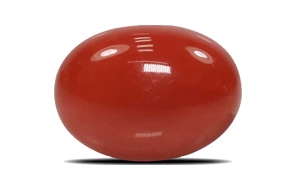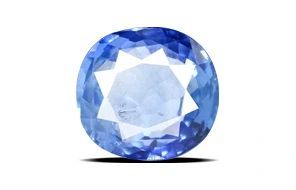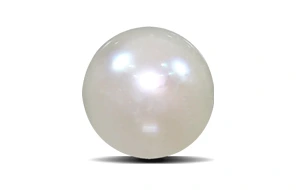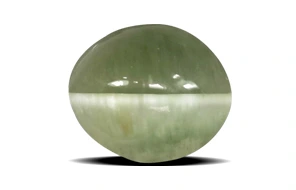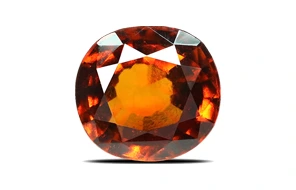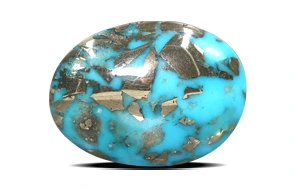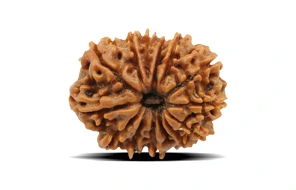Rubies and garnets are two of the most awe-inspiring, enticing, and sought-after gemstones, with enormous value and appeal. Both are gleaming gemstones with significant astrological importance and broad consequences in the jewelry industry. When two jewels of such great magnitude and popularity exist, comparisons are unavoidable, and the final decision must be rendered.
Though rubies and garnets are both visually stunning, they differ dramatically in terms of color variations, physical qualities, durability, value, and popularity. To end the argument once and for all, we have created the most complete comparison between garnet and ruby stones that will undoubtedly assist you in determining which gemstone is exemplary for you and will satisfy all of your intents and objectives. The comparison is made by taking into account many critical variables that are officially utilized by multiple famous gem laboratories to evaluate the quality and pricing of gemstones.
Difference Between Garnet and Ruby
-
Origin
Ruby: The naturally occurring rubies, also known as Manik stone, are mostly found in Thailand and the Salmout District of Columbia. Furthermore, rubies may be found in practically every country, with Afghanistan, Namibia, Scotland, India, Brazil, and Japan being the most abundant. The Republican of Macedonia is Europe's sole major source of par-excellent and naturally occurring rubies. Greenland rubies, if real, are thought to be the oldest existing rubies, dating back around 3 billion years.
Garnet: This gemstone is found predominantly in metamorphic and inventive rocks and has natural inclusions. When it comes to significant garnet-producing countries, India and Africa are at the top of the list. Nigeria, Russia, Sri Lanka, Brazil, Canada, Tanzania, and Madagascar are among the notable producers of high-quality garnet stones. Garnet crystals have enormous astrological relevance, and garnet has one of the most broad and complex family classifications in the gemstone world.
-
Color Comparison
Ruby: Rubies are widely praised and prized for their drool-worthy and eye-catching red color tones. In other words, rubies and the color red are interchangeable. When most people think of red gemstones, the first stone that comes to mind is ruby. The inclusion of additional elements in rubies causes their orange and yellow colors, which reduces their value. The intense red colors of rubies greatly increase their worth. In a nutshell, rubies are synonymous with the red hue in the world of gemstones.
Garnets: When it comes to garnets, the most popular colors are red and reddish-brown, which are ideal for jewelry as well as astrological applications. Garnets come in yellow, brown, and pale green varieties, although they are not as adored and cherished as the red kind. Garnets are red because of the presence of iron elements that infiltrate throughout the volcanic formation process.
What Are The Difference Between Ruby and Gomed (Hessonite)?
-
Price
Ruby: This is an obvious choice. Rubies that occur naturally are exceedingly uncommon and can cost up to a million dollars per carat. However, if we look at the typical price, the price of a ruby starts at $100 per carat and may reach $100,000 per carat. When the origin aspect is considered, Burmese rubies are the most valuable and recognized, with a basic price of $2000-3000 per carat. The price skyrockets as the clarity and color intensity grow by leaps and bounds.
Garnet: When compared to ruby, garnet is thousands of times less expensive. Garnet stone prices are quite low because of its abundance and continuous supply, and can easily range between $10 and $100 per carat. In the pricing category, Ruby comes out on top.
-
Durability
Ruby: Ruby is the third hardest gemstone in the world, with a Mohs scale grade of 9. Only diamond and moissanite are more durable and tougher than rubies. As a result, the ruby stone outlasts the garnet gemstone in terms of durability. Because rubies are more resistant to scratching and breakage, they have a wide range of applications in antique and luxury jewelry.
Garnet: A garnet stone is less hard than a ruby, with a Mohs hardness grade of 6.5-7.0. Garnet jewelry can be severely damaged and scratched if subjected to extreme pressure. This is one of the reasons garnet lags behind ruby gemstones.
-
Physical Properties
Ruby: Ruby belongs to the corundum family and is the third hardest gemstone on the planet. Ruby is admired and prized for its vibrant crimson or blood-red color, which gives this gemstone a dazzling look. The most stable chemical composition of the ruby stone is Al2O3, and the inclusion of residues of Chromium components results in a wide range of red color variations.
Almost every naturally occurring ruby has impurities and imperfections. The concentration of imperfections and inclusions in a ruby stone impacts its quality. The lower the number of inclusions, the higher the quality. Few people are aware that ruby may display the chatoyancy effect, which is particularly noticeable in cats' eye stones.
Garnet: Garnet is a rare gemstone that comes in a variety of hues, the most notable of which is reddish-brown. Garnet stone is available in very clear, semi-opaque, and opaque variants and is widely utilized as an abrasive for a variety of industrial applications.
When it comes to garnets' chemical makeup, they are neo-silicates with the formula X3Y2(SiO4)3. Garnet's interior crystal structure is cubic, therefore when enormous pressure is applied, multiple irregular bits occur.
-
Popularity
We don't need to go into great detail to say that the ruby stone is the number one option for millions of people when it comes to investment, astrological benefit, and enhancing attractiveness. Ruby's dazzling and eye-catching colors can charm anybody, making it one of the most popular gemstone selections.
Garnet, on the other hand, tops the affordability scale and is an excellent substitute for ruby if you are on a tight budget.
-
Light
Holding a garnet up to the light can help you determine if you're looking at a garnet or a ruby. If the light reflects a spectrum of hues, including yellow and green bands, you're probably gazing at a garnet. This is because a ruby's composition absorbs yellow and green and does not reflect them.
-
Professional Assistance
The best approach to ensure that you are spending your money on a ruby rather than a garnet is to buy from a reputable company and bring an expert with you to supervise the transaction. Whether you are purchasing a ruby or a garnet, you will want to be given the most helpful and competent advice available.
As with many other gemstones and goods in general, there is the "real deal" and the "wannabe." The "real deal" has distinction, beauty, and quality, as well as a heavy price tag. If you are determined to get a real ruby and do not want to be duped into purchasing a garnet, you are welcome to follow these suggestions and recommendations and are recommended to become as knowledgeable on the subject as possible. If a ruby is simply out of your price range, you should choose a garnet, which, while not a match for a ruby, has a lot to offer. It is attractive, reasonably priced, and available in considerably greater sizes than most people's budgets allow them to buy a Ruby Gemstone.
-
Rough
The rough stones of each gemstone vary greatly from one another. Even when comparing stones of comparable size, the shape and weight will not be the same. Each gemstone has unique qualities that serve to characterize the stone. They are then evaluated based on the stone's specific qualities.
Ruby vs. Garnet But Which is Better?
To begin with, which is better is a personal choice; we all have different requirements, interests, budgets, and motivations. However, many gemstones are purchased as gifts - as birthstones. If that's the case, your birthday will determine which is preferable for you (or which is correct for you). The Garnet is the birthstone for January-born People and the birthstone for July Month is Ruby.
If you base your decision on the Zodiacal calendar, Garnet signifies Aquarius and Ruby represents Capricorn.
Aside from the traits listed below, there are several more factors to consider, all of which may be addressed by a professional. So, if you've looked at all of the signals stated here and followed the guidance, but still can't figure out which stone you're holding, you should visit a professional - no one wants to wind up with a garnet that costs the same as a ruby.
About The Author
Mr. Bharat Sharma, the head of the Digital Media team, has over 15+ years of experience in online media. He plays a vital role in developing strategy, ensuring quality, and providing support to customers. Highlights the experience and dedication to online marketing with natural crystals. He contributes the digital marketing knowledge to Rashiratanbhagya. Mr Bharat Sharma blends digital innovation with the ancient Vedic wisdom.

